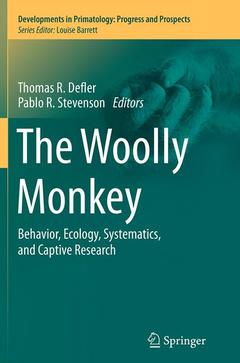Description
The Woolly Monkey, 2014
Behavior, Ecology, Systematics, and Captive Research
Developments in Primatology: Progress and Prospects Series
Coordinators: Defler Thomas R., Stevenson Pablo R.
Language: English
Subjects for The Woolly Monkey:
Publication date: 09-2016
Support: Print on demand
Publication date: 05-2014
302 p. · 15.5x23.5 cm · Hardback
Description
/li>Contents
/li>Comment
/li>
The editors draw together a number of recent woolly monkey studies from three Amazonian countries, including five taxa of woolly monkeys, four of which have recently been reclassified without using new biological criteria as species rather than subspecies (Groves, 2001, 2005; Rylands & Mittermeier, 2009). This volume provides a diversity of studies by well-known researchers and advanced students on a wide range of subjects using newly generated data, including a criticism of the recent taxonomic changes. The varied information contained within The Woolly Monkey: Behavior, Ecology, Systematics and Captive Research will help readers understand these handsome animals and will, we hope, energize them to contribute to their conservation.




